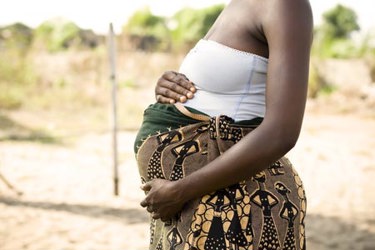Safety And Pharmacokinetics In LMIC Clinical Trials
By Micha Levi, Ph.D., and Charles Wells, MD, Gates Medical Research Institute (Gates MRI)

Tuberculosis (TB) and malaria, two infectious diseases whose burdens weigh the heaviest on low- and middle-income countries (LMICs), killed almost 2 million people in 2023. The Gates Medical Research Institute develops medicines, biologics, and vaccines for global health with a focus on these two threats, seeking to cut in half the time it takes to treat TB and develop new prevention tools that can protect a high percentage of the most vulnerable from both TB and malaria.
As medicines, biologics, and vaccines must operate inside human bodies, to achieve our goals we need to understand the behavior of these compounds in the body. This includes characterization of the pharmacokinetics (PK) and the relationship between PK exposure and response, i.e., pharmacokinetic-pharmacodynamic (PKPD) relationship; food effect on exposure to the compound; interactions between the compound and other agents; genetic variability; and the PK in subpopulations (such as pediatric patients) as they are all crucial elements for developing safe and effective therapies that function well in real-world conditions.
The Importance Of PK/PKPD
Clinical trials are meant to do more than simply assess the efficacy of experimental compounds. They must also meticulously track how the body absorbs and metabolizes the compounds and detect any emerging safety signals. Researchers must embrace a comprehensive approach that gathers robust, reliable data, which in turn is essential for advancing our understanding and development of new treatments.
Understanding the PK/PKPD relationship of experimental compounds is crucial as it enables the development of sophisticated mathematical models. These models can simulate various scenarios that might not be tested experimentally, thus supporting both the design of new clinical trials and the understanding of how drugs and vaccines function in specific population subsets. Such insights are invaluable as they inform dosing assessment and dose selection for drugs comprising new regimens, delivery strategies, and the broader implementation program design, particularly for LMIC populations, which often have different physiological and environmental variables compared to Western populations.
A high degree of variability can exist across populations in how drugs are metabolized, which can result in a large variability in exposure. To adequately and accurately profile the safety and PK of a promising new drug or regimen, developers are compelled to test and evaluate it across the different regions of the world. This provides a deeper understanding of how a given agent performs and how effective it might be, with efficacy, safety, and final dose selection tied to PK.
The Challenge Of Executing Trials In LMIC Settings
It is important to recognize that we operate under dual regulatory expectations from both the Global North and South. Consequently, our protocols must be both rigorous and tailored to be locally appropriate — we need to match the requirements of countries and regions with high disease burdens that can benefit from the medicines, biologics, and vaccines evaluated and developed through our clinical trials.
For eventual approval by regulatory authorities, the expectation is that performance across diverse populations has been assessed to holistically understand how effective and safe a given new drug/regimen might be. We will not make a dent in the incidence and mortality of these diseases if we leave out those communities that are typically underserved and more vulnerable.
Crucial Considerations For Women’s Health
The questions surrounding safety issues for women of childbearing potential present a number of important details to consider. The inclusion of women — particularly women of childbearing potential — in clinical research is essential to ensure that trial findings are broadly applicable to the populations most affected by disease.
Pregnancy, however, introduces unique safety considerations for both the woman and the developing fetus, requiring additional studies before pregnant women can be enrolled in clinical trials. For this reason, they are generally excluded from early-phase studies until supportive toxicology research demonstrates an adequate margin of safety and characterizes potential risks of fetal exposure to investigational compounds. This precaution avoids exposing unborn babies to experimental treatments before sufficient safety data are available.
Because of these concerns, pregnancy prevention measures are a critical component of ethical trial design. Without them, women of childbearing potential would need to be excluded from studies until adequate safety data were generated, much later in the clinical trial process. Such exclusion would limit the generalizability of trial findings to the broader population and delay regulatory approvals. Ensuring the safe inclusion of women is therefore a necessity.
Contraceptive access and acceptability, however, vary widely across regions. The choice and use of contraceptive methods are shaped by cultural norms, religious beliefs, gender dynamics, and the degree of autonomy women have in reproductive health decision-making. In some contexts, modern contraceptive use may be discouraged or stigmatized; in others, barriers such as cost, availability, or fragile healthcare infrastructure pose significant challenges. Respecting these differences requires culturally sensitive and locally tailored approaches, ensuring that women can make informed, voluntary decisions about trial participation. Where possible, trial protocols should provide access to a range of acceptable contraceptive methods and engage communities in dialogue to build trust and reduce barriers to participation.
It is equally important to recognize that pregnant women are not only a population requiring protection but also one of the most at-risk groups for global health threats. Diseases such as malaria, HIV, tuberculosis, and emerging infectious pathogens carry heightened risks in pregnancy, with serious consequences for both maternal and fetal health. Yet historically, pregnant women have been systematically excluded from research, leaving critical evidence gaps that undermine clinical care. The absence of pregnancy-specific safety and efficacy data forces clinicians to make treatment decisions in conditions of uncertainty, often at great risk to both mother and child.
For these reasons, once an investigational compound has advanced beyond early testing and demonstrated a favorable safety and efficacy profile, dedicated safety and PK evaluations in pregnant women should be prioritized. Earlier inclusion of this population in late-stage trials would ensure that clinical evidence reflects their unique risks and needs.
This approach — protecting participants while also addressing the needs of vulnerable groups — ensures that new interventions can be developed and deployed in ways that are safe, respectful, and applicable to the communities most in need.
Four Additional Considerations For PK And Safety Monitoring In LMIC Trials
Through past and present clinical trials, we have identified four more factors that should be incorporated throughout the clinical trial planning process. These include:
1. Baseline Variability
Many local contexts often have unique characteristics. Pediatric growth charts can be different, reflecting the population’s genetics, diet, and food security status; evaluation of PK/PKPD data needs to take this variability into account. Similarly, prior exposure to the diseases studied can impact the results when evaluating compounds in places with a high burden of malaria or TB. We need to identify these variabilities and carefully tailor our interpretation of PK and safety data to address the different baselines that these contexts present.
2. Food Effects and Nutrition
Some oral medications require food with their administration to enhance absorption, and food effects as such need to be identified in clinical trials during the development process. However, in food-insecure settings, this necessity can present ethical challenges, particularly concerning perceived inducement for trial participation, given that undernutrition — prevalent in many LMIC settings — is a risk factor for TB. It is essential to navigate these considerations carefully to ensure ethical conduct and participant safety in such trials.
3. Stigma, Adherence, and DOT
Directly observed therapy (DOT) is the standard approach for treating TB, but it can often be stigmatizing for patients. Going to clinic regularly, five days or more every week, or having a healthcare worker coming to the home can reveal a TB diagnosis to the broader community and thus trigger discrimination and bias in locations where TB stigma has a strong presence.
To address this, we have implemented video DOT, which has shown great promise. This method, using mobile phones, empowers patients by allowing them to adhere to their treatment plan without the need for in-person observations at the clinic or healthcare worker visits. Additionally, we have included thoughtful constraints on phone usage to ensure that it remains a supportive tool without becoming an undue incentive for trial participation. By leveraging video DOT, we can strike a balance between maintaining adherence and promoting patient dignity.
4. Healthcare Capacity and Emergency Response Infrastructure
Not all trial sites can address the broad range of patient needs required when executing therapeutic clinical trials, including the capability to handle adverse events and evaluate the cause of each event. We often need to tailor our site selection based on this capacity.
Therefore, we need to find ways to improve the range of services and the infrastructure of sites that participate in clinical trials or reconsider our site selection to ensure that adverse events and extenuating circumstances can be handled effectively.
Building Broader Expertise
With our clinical trials, we understand that each one is an opportunity to support the critical need for sustainable investments in research systems, workforce development, and clinical infrastructure in LMICs. By doing so, we are not merely conducting trials but are also fortifying the broader public health ecosystem, ensuring long-term benefits and resilience. Only 2% of randomized clinical trials are conducted in sub-Saharan Africa and only 5% in South Asia. Our goal is to help move these numbers to 10% to 15% in the next five years, generating infrastructure improvements along with important research developments.
If we design trials that are not only scientifically rigorous but also responsive to the unique realities of the settings we operate in, we will significantly improve our chances of generating evidence that leads to scalable and equitable impact. This approach ensures that our findings are both relevant and applicable, ultimately benefiting a broader range of communities and reducing the burden of TB, malaria, and other diseases that disproportionately affect LMICs.
About The Authors:
 Micha Levi, Ph.D., is a clinical pharmacologist and pharmacometrician at the Gates Medical Research Institute, where he applies pharmacometrics and model-informed drug development (MIDD) to advance therapies for tuberculosis, malaria, RSV, and other infectious diseases in resource-limited settings. His work focuses on leveraging quantitative methods to optimize dosing strategies, assess drug efficacy, and guide evidence-based decisions throughout the drug development process.
Micha Levi, Ph.D., is a clinical pharmacologist and pharmacometrician at the Gates Medical Research Institute, where he applies pharmacometrics and model-informed drug development (MIDD) to advance therapies for tuberculosis, malaria, RSV, and other infectious diseases in resource-limited settings. His work focuses on leveraging quantitative methods to optimize dosing strategies, assess drug efficacy, and guide evidence-based decisions throughout the drug development process.
 Charles Wells currently serves as the head of therapeutics development at the Gates Medical Research Institute in Cambridge, Massachusetts. Previously, he served as executive VP for global health and development for infectious diseases at Evotec and associate VP for infectious diseases therapeutics at Sanofi.
Charles Wells currently serves as the head of therapeutics development at the Gates Medical Research Institute in Cambridge, Massachusetts. Previously, he served as executive VP for global health and development for infectious diseases at Evotec and associate VP for infectious diseases therapeutics at Sanofi.
